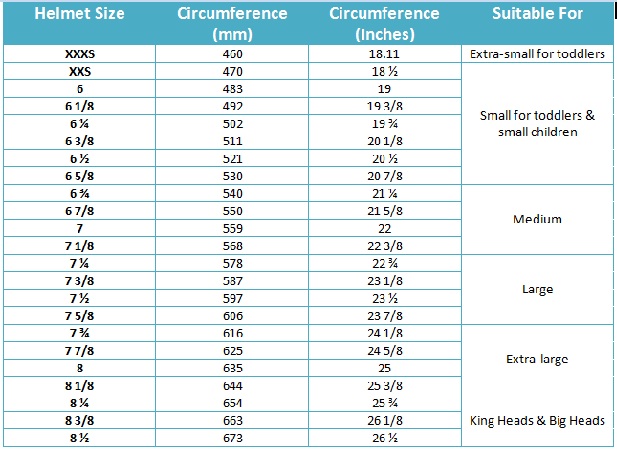Cycling Helmets
The function of the cycling safety helmets is to protect the head and some parts of the face areas from scrapes, abrasions, bruises and other minor injuries that can occur in the event of falls or minimal impacts and collisions. The question of whether cycling helmets can indeed provide greater impact resistance from serious accidents is still debatable in general. However bicycle helmets are still frequently used by many avid cyclists and sports cyclists as they are still essential form of head protection for their regular exposure to road conditions. This is especially so as the number of cyclists’ population grows with increasing interest in cycling as leisure as well as a sport in Singapore. Bicycle helmets sold in cycling stores in Singapore come in all kinds of sizes and materials, sometimes as cycling beginners you may find it hard to decide on which type. We share with you what are the important safety features to look out for, the correct helmet sizes and other essential parts of a cycling helmet to help you with your selection.
Bicycle Helmet Parts
There are 3 main parts to a cycling helmet: the Liner, the Shell and the Strap
Look for one that has a liner of medium thickness and medium density. Liners are generally made of Expanded Polystyrene foam, and can be made in several layers and densities for impact management. In any case, there is usually internal reinforcement in the liners to make them more impact resistant, therefore try to avoid linings that are too thin or too soft or they will not be able to withstand most impacts. Usually thicker liners would mean harder in material since more layers are used; in the event of an impact, they can cause unnecessary bruises instead of cushioning the impact. When it comes to an impact, Liners act as shock absorbers and are critical in dissipating the overwhelming energy to the skull in the event of an impact. The construction of the lining should be done in one piece together and bond tightly with the shell.
There are basically 2 types of shells: the hard-shell and the soft-shell. Hard shells are generally made from fiberglass on the outer shell that has the ability to hold the inner shell together in the event of a crash and also can prevent sharp objects from penetrating through the helmets. Hard-shells are generally heavier and warmer compared to soft-shell however they are more stable on the fit. As beginners, you may perhaps begin with soft-shell helmets because at this point you should not allow helmets to weigh you down prior to gaining cycling experience. Soft-shells basically made up the only shell of the helmets as they do not have any outer shells. Choose helmets with shells that are integrated with the helmet mold. Such shells are usually made of heat resistant Polycarbonate plastic and are manufactured together with the mold instead of separately laid for better durability.
When it comes to straps, choose straps that come with buckle and not any other forms of fastening. Buckles are the safest way to secure and fasten the helmet to a cyclist because it enables the helmet to have a snug and a good fit on the head. When the strap is fastened at the chin, there should be room for just one finger to be able to go through the space between the strap and the chin. One way to test if you have the right strap fit is to open your mouth wide, and if you feel the helmet tugging down on your head, then the strap has the right fit against the head.
Bicycle Helmet Size
One the most important cycling safety gear is the safety helmet. Bicycle helmets come in various sizes, and you should determine your helmet size by measuring the circumference around your head at the level just above your eyebrows. It is important that helmets should have the right fit on the cyclist; the better the helmet fit, the better the protection. Below is the cycling helmet size chart as a guide:
Cycling Helmet Interior Material
A good bicycle helmet should have at least 10 ports for airflow ventilation. Porosity in the helmet material is important because it allows the cyclist’s head and face to ‘breathe’, allowing sweat and perspiration to evaporate out instead of being trapped, resulting in perspiration trickling down the forehead and eyes, affecting the vision on the road. More porosity will also mean lighter weight in the helmet and light weight is necessary for making your cycling an easier experience. It is advisable to choose helmets with interior paddings that are well stitched to the interior lining, instead of those that are just glued on directly.
Now that you understand a little about cycling helmet sizes, the next important thing to know is what are cycling helmets buying tips and how to choose the right bike sizes before you can begin cycling optimally.
